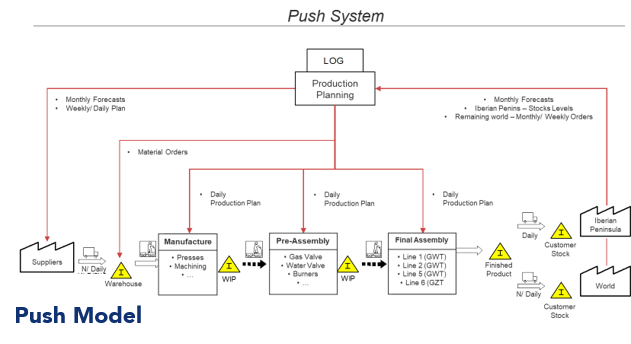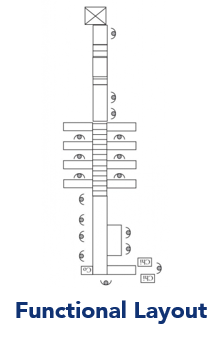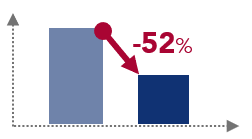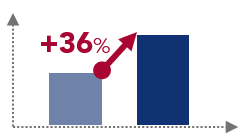The Challenge


Problem
- Finished goods inventory coverage of 15 days with a customer service level of 93% – dysfunctional inventory
- Raw materials and parts stock coverage of 30 days
- Between 1 and 5 days of WIP in production and assembly lines
- 50% of planned production lost due to lack of parts and poor line efficiency
Root Causes
- Finished goods planning based on order forecasts: forecast errors between -18% and 16%
- Functional layout: preassembly lines separated from final assembly lines
- Operators isolated from each other, parts returned to the warehouse, supply of large pallet-sized containers, poor operator standard work, low line balancing efficiency
- Delivery to final assembly line by forklifts, under the instruction of operators or supervisors
The solution


• Pull planning algorithm used on a daily basis to compare a certain replenishment level with the current stock of finished goods and create the production orders according to deviations
• Transformation of orders into KANBAN and planning on a daily basis through a logistics box
• Daily schedule determined by freezing one day of production according to levelling rules
• Transformation of one assembly line to two with fewer product references on each; zero changeover time; balanced operation time between operators; small containers on the border of line
• Three Mizusumashi circuits for purchased parts, sub-assemblies and finished goods
The Results
The project had a Payback period of 5 months with annual savings surpassing £3 million.

Internal Defects
Number of rejected parts reduced by 52% (measured in parts per million)

Productivity
Number of parts produced by each operator increased by 36% (on average)

Inventory Coverage
Finished goods stock coverage reduced from 50 days to 30
#assembly manufacturing #operations
See more on Assembly Manufacturing
Find out more about transformation in this sector
See more on Operations
Find out more about improving this business area
